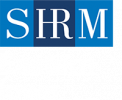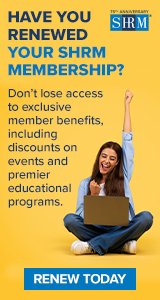Mental Health Month Is Officially Behind Us, Now What?
Mental Health Month Is Officially Behind Us, Now What?
At Covenant Workplace Solutions, we believe that mental health is not a one-month campaign, it’s a year-round commitment to creating a workplace where employees feel valued, supported, and empowered to thrive. As HR leaders, you’ve likely spent May, Mental Health Awareness Month, amplifying conversations about mental wellness, sharing resources, and encouraging employees to prioritize their well-being. But now that May is behind us, the real work begins: sustaining those efforts to ensure mental health remains a cornerstone of your workplace culture.
The data is clear—mental health impacts every facet of organizational success. According to the World Health Organization, depression and anxiety cost the global economy $1 trillion annually in lost productivity, with mental health issues contributing to 12 billion lost working days each year. Closer to home, Gallup’s 2023 State of the Global Workplace Report found that 44% of employees worldwide experience significant daily stress, while 76% of U.S. employees reported at least one mental health symptom in the past year. These numbers underscore the urgency of consistent, intentional action to support employee mental health beyond a single awareness month.
Consistency is key to making mental wellness a part of a thriving workplace culture. At Covenant Workplace Solutions, we partner with organizations to build sustainable mental health strategies that reduce stigma, promote resource utilization, and foster psychological safety. This guide offers actionable steps for HR leaders to keep the momentum going, ensuring mental health remains a priority all year long. If you’re looking for a strategic, proven partner to help you implement these strategies or need a comprehensive Employee Assistance Program that delivers a proactive approach, our Lifestyle EAP is designed to meet your workforce’s diverse needs.
Why Year-Round Mental Health Initiatives Matter
Mental Health Awareness Month, established in 1949 by Mental Health America, is a powerful catalyst for raising awareness, but its impact fades if efforts stop on May 31st. A one-off campaign risks signaling to employees that mental health is a checkbox rather than a core value. To create a workplace where employees feel safe to seek help and thrive, HR leaders must embed mental wellness into the organizational fabric. This means fostering a culture of openness, reducing stigma, and ensuring employees know how to access key resources like EAPs without fear of judgment.
The benefits of sustained mental health initiatives are undeniable:
- Increased Productivity: Employees with good mental health are more focused and motivated.
- Reduced Absenteeism: Addressing mental health concerns can lower unplanned absences, which employees with poor mental health take at a rate of 12 days per year compared to 2.5 for others.
- Improved Retention: A supportive mental health culture boosts morale and reduces turnover, with 92% of workers stating that mental health support is important to their job satisfaction.
- Enhanced Engagement: Cultures that prioritize well-being see higher employee engagement, innovation, and collaboration.
Let’s dive into actionable steps to keep mental health front and center throughout the year.
Actionable Steps for HR Leaders
1. Normalize Mental Health Conversations Year-Round
Stigma remains a significant barrier to mental health support. A study cited in the Journal of Occupational and Environmental Medicine found that 47% of people are unwilling to work with someone diagnosed with depression, and many employees fear disclosing mental health issues due to concerns about social exclusion or career limitations. To reduce stigma, HR leaders must create an environment where mental health is openly discussed regularly and normalized.
Actionable Steps:
- Lead by Example: Encourage senior leaders to share their mental health experiences, if comfortable, to model vulnerability and openness. For example, leaders at Covenant Workplace Solutions openly discuss the importance of work-life balance and accessing support, setting a tone of authenticity.
- Host Regular Awareness Campaigns: Beyond May, organize quarterly mental health awareness events, such as World Mental Health Day (October 10th) programming or stress management seminars. Share stories of employees (anonymously, if preferred) who have benefited from using mental health resources to help humanize the conversation.
- Cultivate Safety: Establish employee resource groups or peer-to-peer learning groups where employees can share experiences and support one another. These spaces foster a sense of community and reduce feelings of isolation.
- Communicate Consistently: Include mental health tips in monthly newsletters, post EAP contact information on your intranet, and display posters in common areas. Normalize phrases like “It’s okay to not be okay” to encourage open dialogue.
2. Promote and Enhance EAP Utilization
Employee Assistance Programs are powerful tools, but underutilization is quite common. Nearly half of employees are unaware if their employer even offers an EAP, let alone knows how to access it. At Covenant Workplace Solutions, our Lifestyle EAP provides confidential support for stress, anxiety, depression, relationship challenges, financial concerns, and so much more, but awareness and accessibility are absolutely critical to its success.
Actionable Steps:
- Educate Frequently: Promote your EAP through multiple channels—emails, team meetings, and onboarding sessions. Highlight that it’s CONFIDENTIAL, FREE, and available to employees and their families (assuming they are included with your plan, of course).
- Train Managers: Equip supervisors with training to recognize signs of distress and how to guide employees to EAP resources. For example, Covenant Workplace Solutions offers this optional training to its Lifestyle EAP partners to help set them up for success.
- Simplify Access: Ensure employees know exactly how to contact the EAP (e.g., a dedicated phone number or online portal). Covenant’s Lifestyle EAP offers both phone and online access for convenience.
- Measure Utilization: Track EAP usage anonymously to identify trends and barriers. Share success stories (without compromising confidentiality) to demonstrate its value.
3. Build a Culture of Psychological Safety
Psychological safety—where employees feel safe to express concerns without fear of retribution—is essential for mental wellness. The American Psychological Association’s 2023 Work in America Survey found that 95% of workers value a workplace that respects work-life boundaries, and 92% prioritize mental health support. A culture of psychological safety encourages employees to seek help and engage fully in their roles.
Actionable Steps:
- Encourage Work-Life Balance: Offer flexible work arrangements whenever possible, such as hybrid schedules or mental health days, to reduce burnout.
- Foster Prosocial Behavior: Promote team-building activities that encourage collaboration and appreciation, such as peer shout-outs or recognition programs. These efforts strengthen workplace connections and reduce stress.
- Set Clear Policies: Establish and enforce policies against harassment and bullying, with clear processes for addressing complaints. This creates a safe environment where employees feel valued.
4. Offer Diverse, Accessible Wellness Resources
Mental health needs vary, so a one-size-fits-all approach won’t suffice. HR leaders should provide a range of resources tailored to employees’ needs, from self-guided tools and resources to 1:1 professional counseling. Covenant Workplace Solutions partners with organizations to align wellness programs that resonate with diverse workforces.
Actionable Steps:
- Provide Self-Guided Tools: Find out what type of low-touch options are included with your EAP and let employees know the program is much more than counseling sessions.
- Organize Wellness Challenges: Launch gamified challenges, such as step-counting or mindfulness streaks, to engage employees in healthy behaviors. These can boost participation and morale. Covenant Workplace Solutions launches a new challenge every month for all of its Lifestyle EAP members.
- Physical Health and Mental Health: It is clearer than ever that these go hand-in-hand. When one suffers, it doesn’t take long for the other to suffer as well. Figure out how your EAP addresses both sides of this, beyond solely focusing on the mental health side of the ledger.
- Enhance Benefits: Ensure mental health coverage is robust, with clear information on accessing outpatient and inpatient care.
5. Measure and Adapt Your Initiatives
To ensure long-term impact, HR leaders must assess the effectiveness of mental health programs and adapt based on employee feedback and quantitative data. Pulse surveys, anonymous feedback tools, and utilization reporting from your EAP provide insights into what’s working and what needs improvement.
Actionable Steps:
- Track Key Metrics: Monitor absenteeism, EAP utilization, turnover, and self-reported well-being to gauge program success. Establish a baseline and review quarterly.
- Gather Feedback: Use anonymous surveys or digital suggestion boxes to understand employee needs. Regular check-ins with managers can also help uncover insights.
- Iterate Continuously: Adjust programs as-needed based on data and feedback. For example, if EAP usage is low, consider scheduling additional promotion or workshops. Take a look at Covenant Workplace Solutions’ many workshops here.
- Celebrate Successes: Share positive outcomes, such as increased EAP engagement or reduced stress levels, to reinforce the value of mental health initiatives.
Partner with Covenant Workplace Solutions
Sustaining mental health initiatives year-round requires commitment, resources, and expertise. At Covenant Workplace Solutions, we’re here to help you create a mentally healthy workplace that drives engagement, productivity, and retention. Our comprehensive suite of services, including our Lifestyle EAP, offers tailored solutions to meet your organization’s unique needs. The bottom line is this, we partner with HR leaders to build cultures where employees thrive.
Our Lifestyle EAP provides:
- Confidential counseling and life coaching for employees and their families
- Support for stress, anxiety, financial or legal concerns, and more
- Easy access via virtual or in-person sessions
- Resources to promote work-life balance and resilience
If your organization is ready to take your mental health initiatives to the next level, look no further. Contact us today to learn how we can support your vision for a healthier, more engaged workforce!

.png)



